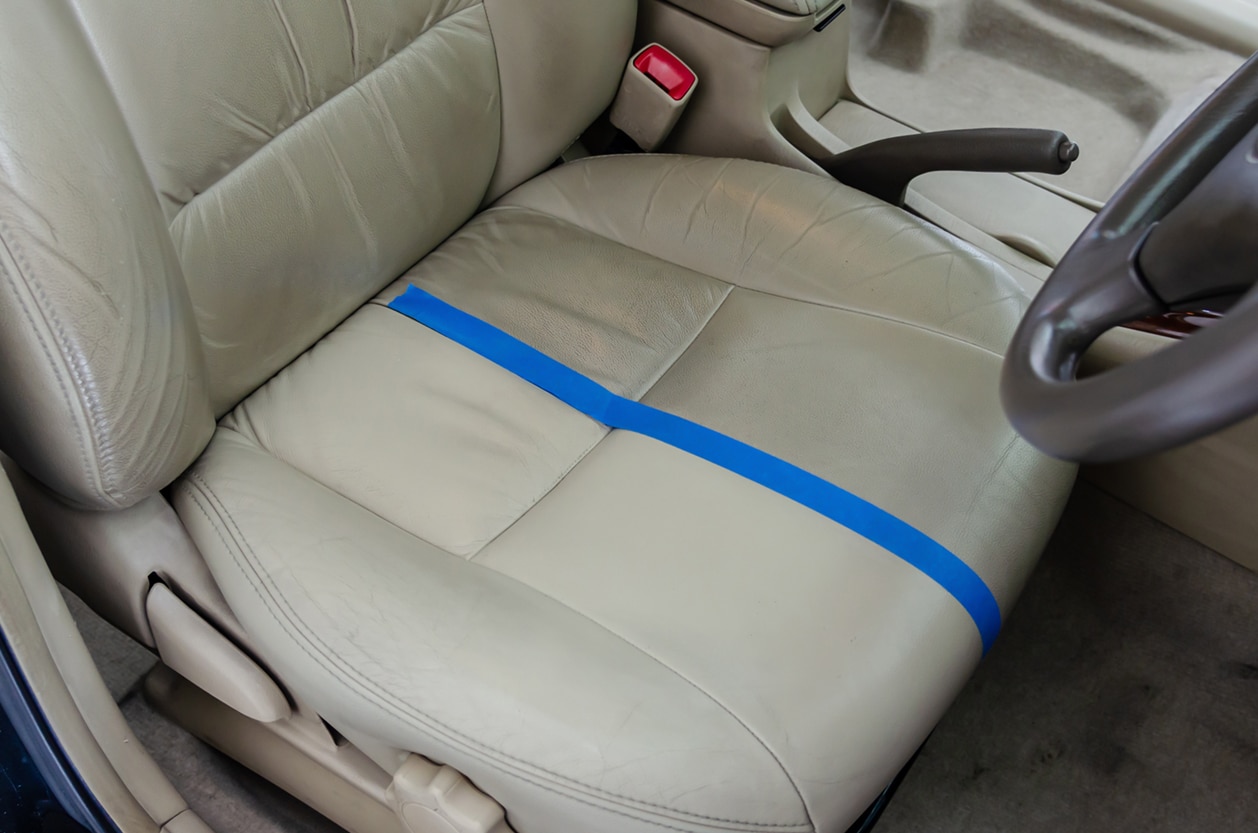
Before applying any cleaning product to your leather seats, it is wise to first test a small area to ensure it does not cause damage or discoloration to the material. Doing this ensures you won't encounter any surprises later!
Cleaners strip leather of its natural oils and moisture, leading to cracking and premature wear-and-tear over time. To restore leather's health and look, apply thick moisturizers like coconut oil or beeswax.
Vacuuming regularly helps protect leather seats from becoming embedded with dirt, food and dust. Use a vacuum with an upholstery attachment to thoroughly clean all seams and tight spaces on your seats - for stubborn spots use a soft-bristled brush with soft bristles to scrub off and remove the dirt.
Certain soils, such as food particles, sand, and grit can act as abrasives on leather surfaces and cause irreparable damage. Vacuuming will help remove these abrasive agents before applying a cleaning solution to your seats.
Before applying commercial cleaners to your seats, read and follow all instructions carefully. Many cleaners contain harmful chemicals which could irritate skin conditions; perform a test patch on a small hidden area to make sure it won't react adversely with materials present on them.
Modern leather seats typically include perforations or venting holes to help regulate seat temperature by allowing heat and cool air to circulate, helping regulate temperatures on both sides of the seat. Cleaning such small holes may be more challenging than non-perforated areas of your seat, so use caution when doing so. Toothpicks or inter-dental brushes with flexible tips may help remove dirt without damaging the material of the seat.
Before using any cleaning solution, use an upholstery attachment to vacuum your leather seats to eliminate loose dirt particles and focus on crevices between cushions and seams.
After vacuuming, use a microfiber cloth to wipe down your seat to remove any additional debris that was missed by the vacuum. Doing this is especially important as too much moisture can lead to mold and mildew growth on its surface, leading to further degradation of material.
Leather cleaner can either be purchased commercially or homemade with warm water and Castile soap. When choosing commercial products, make sure they do not contain bleach or ammonia which may discolor leather over time. In either case, avoid oversaturating as excess moisture could pool in stitch holes and seep into cushion linings causing it to seep into cushions resulting in their eventual discoloration.
Alternative Home Remedies for Oil and Grease Stains When dealing with oil or grease stains, try applying baking soda over the area affected. Allow time for it to absorb any traces of oil before wiping off using damp cloth and then rinsing with warm water. Alternatively, try applying rubbing alcohol directly onto the stain using cotton swabs before blotting for best results.
After vacuuming your leather seats, a gentle scrub with a soft brush or rag can effectively remove any sticky residues left behind from melted gummi snacks or juice spillage - giving you an immediate sense of accomplishment when finished!
Rub a rag soaked with rubbing alcohol over any stubborn stains on your seats until they disappear, then use a clean, lint-free cloth to wipe down all surfaces to remove the alcohol from them.
Apply a cleaning solution to the seats and any other leather surfaces of your vehicle - such as door panels and the dashboard - including leather. Allow the cleaner to sit for 30-60 seconds so it can break up any contaminants on your leather seats, taking care not to over-saturate as excess liquid takes longer to dry, which can encourage mold growth inside. Be sure to perform a spot test first before using any new cleaner or conditioner on all seats in your vehicle.
As with any cleaning process, it is always wise to conduct a preliminary test on any new cleaners or products before applying them on a larger section of leather seating. This allows you to see how they interact with the material without damaging or stripping away its natural hue.
After using cleaning solution, it is recommended that a microfiber cloth be used to dry the seat to help avoid moisture build-up that could cause mold or mildew growth. Furthermore, regular use of protectant/hydration products to keep leather from drying out and cracking should also be implemented in order to keep car seats looking their best.
Many modern leather seats feature perforations or venting holes, making removal of dirt from these small areas difficult without proper tools like toothpicks or inter-dental brushes. When cleaning perforated leather seats it's important to avoid spraying directly onto them; spraying onto a microfiber towel instead will prevent overspray while enabling you to focus on individual areas that need attention more effectively.
Now that you know how to clean your leather car seats, it's time to think about upgrading your home furniture to match the same level of sophistication and luxury.
Introducing Kenton Sofas - the epitome of comfort, style, and durability. Whether you're lounging, entertaining guests, or simply enjoying a moment of tranquility, Kenton Sofas offer the perfect blend of elegance and functionality.
Visit our website to explore the wide range of Kenton Sofas available, each meticulously designed to elevate your living space. From sleek modern designs to timeless classics, there's a Kenton Sofa that caters to your unique taste and preferences. Experience the ultimate in relaxation and make a statement with Kenton Sofas today!
